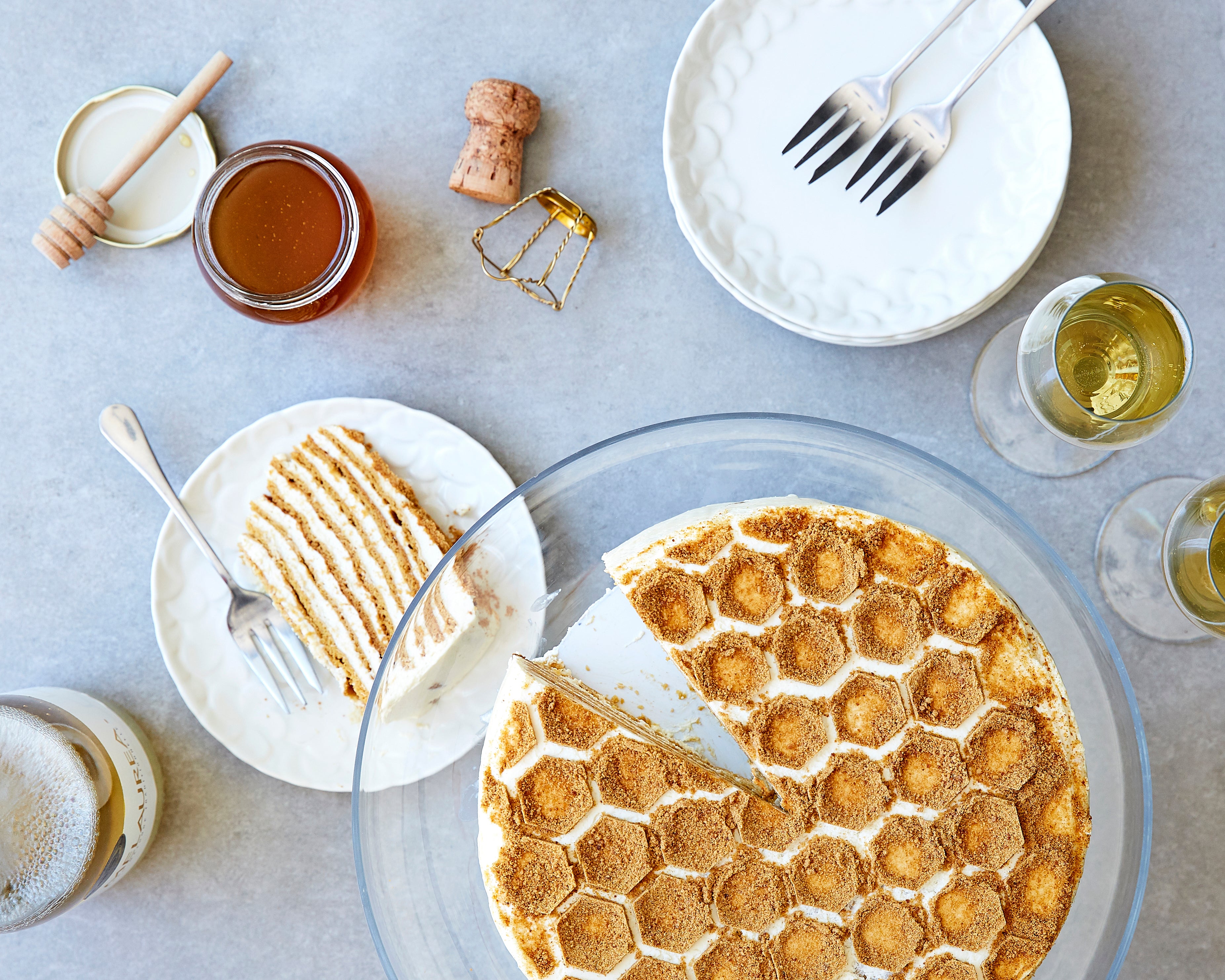Honey Cake recipe for a special celebration

In celebration of World Bee Day, we’re sharing the recipe for this delicious Honey Cake! A little labour of love, but remember that most of the work was done by the bees already. Did you know that it takes 12 worker bees to produce 1 teaspoon of honey over their lifetime? That makes you appreciate that drizzle of honey over your smoothie bowl even more!
This Honey Cake has a charming history. It was created in the 19th century in the Russian Empire by a young chef who wanted to impress Empress Elizabeth Alexeievna, the wife of Alexander I. What he didn’t know was that Empress Elizabeth couldn’t stand honey, and any dish made with it drove her mad.
So one day he baked a new cake with honey and thick sour cream, which he thought would impress her. Surprisingly, and unaware of the honey content, Empress Elizabeth immediately fell in love with the delicious cake. To this day the Honey Cake is a favourite amongst both chefs and home bakers. It takes a little effort, but it’s so worth it!
To grind the crumb for decoration you use the narrow base OmniBlend jug. Both the 2ltr and 1.5ltr narrow base jugs are excellent for grinding, which is what makes these jugs the most versatile and recommended for home use too. You can find the models for home use here.
Now let's get baking!
Ingredients:
Pastry layers:
- 3/4 C honey
- 1/4 C castor sugar
- 2 tbsp butter
- 3 large free range eggs
- 1 tsp bicarb of soda
- 3 C cake flour
Icing:
- 750ml fresh cream
- 750 ml sour cream
- 2 C powdered sugar
Method:
Start with the pastry layers.
- Heat honey, sugar and butter in sauce pan over low heat, whisking occasionally until sugar is melted. Meanwhile, beat the eggs.
- Remove the pan from heat and while it’s still hot, add beaten eggs in a slow steady stream while whisking vigorously until incorporated (whisk constantly so you don’t end up with scrambled eggs).
- Whisk in the bicarb of soda until no lumps remain, then fold in the flour 1/2 cup at a time with a spatula until the dough reaches a clay consistency and doesn’t stick to your hands.
- Cut the dough into 8 equal pieces and start with rolling the first layer immediately, it works easier when the dough is still warm.
- On a well-floured surface, roll each piece out into a thin 22cm circle (about 3mm thick). Sprinkle the top with a little flour to keep dough from sticking to your rolling pin.
- Place a 22cm springform base over your rolled dough and trace around it with a knife to get a perfect circle. Keep the scraps for later.
- Transfer the dough to a large sheet with baking paper and bake 2 at a time at 175C for 4-5 minutes or until golden.
- Transfer to a wire rack and let cool completely before stacking. While the layers are baking, roll the next layers, to speed up the process.
- Finally bake the off-cuts separated evenly on a baking sheet. Once the scraps are baked, cooled and firm, add to your OmniBlend jug, and blend until you have fine crumbs.
While the layers are cooling down, prepare the icing.
- Beat fresh cream with a hand mixer until stiff peaks form.
- In a separate bowl, whisk together sour cream with powdered sugar. Fold the whipped cream into the sour cream and you have your frosting. Refrigerate until ready to use.
- Spread about 1/3 cup frosting on each cake layer (don’t skimp on it since the cake needs to absorb some of the cream to become ultra soft. Press the cake layers down gently as you go.
- Frost the top and sides with the remaining frosting. Sprinkle the crumbs over the top layer for decoration.
- Place in the fridge so that the cream can soak into the layers. Chill for at least 8 hours, or make the day ahead.










Leave a comment